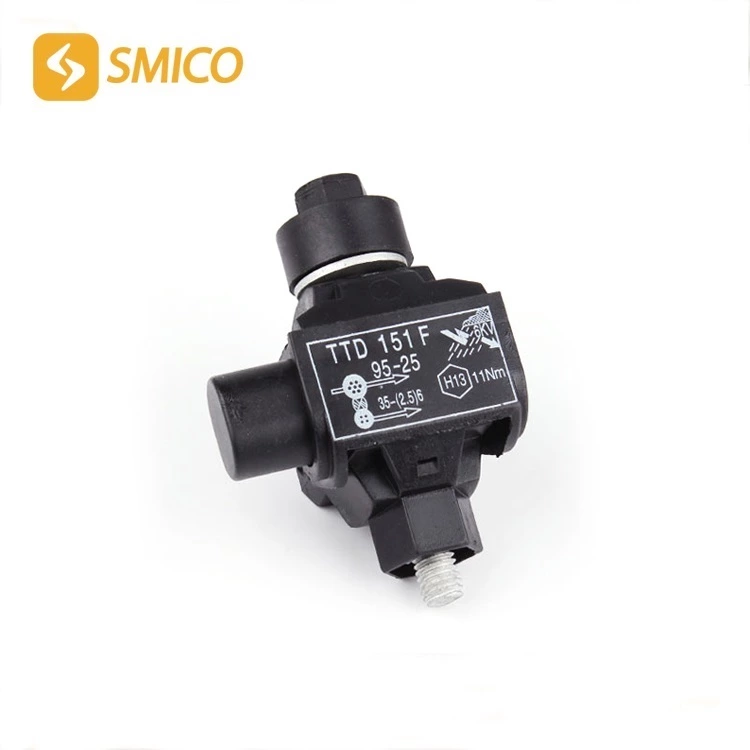Technical Design Challenges Of Insulation Piercing Connectors Explained!
With the full deployment and commercialization of 5G communication technology, insulation piercing clamp, as a key component of signal transmission and electrical connection, faces unprecedented technical design challenges. The high frequency, large bandwidth, low latency and large-scale connection characteristics of 5G communication have put forward extremely high requirements on the performance, reliability, size and cost of ipc cable connector. In this article, Xinpengbo Electronics will deeply explore the technical design challenges of 5G communication to ipc insulation piercing connector.
1. High-frequency characteristic challenges:
5G communication uses higher frequency bands, such as millimeter wave bands, which requires piercing cable connector to have excellent high-frequency performance. High-frequency signals are prone to attenuation and interference during transmission, so piercing electrical connectors needs to be designed with low insertion loss, low return loss and high isolation characteristics to ensure stable signal transmission. In addition, high-frequency signals also put forward higher requirements on the materials and structures of piercing wire connector. It is necessary to select materials with low dielectric constant and low loss factor, and optimize the structural design of wire piercing connector to reduce signal reflection and crosstalk.
2. Challenges of miniaturization and integration:
The trend of miniaturization and integration of 5G communication equipment is becoming increasingly obvious, which puts higher requirements on the size and integration of connectors. Connectors need to be designed to be more compact and thin to meet the equipment's demand for space efficiency. At the same time, in order to achieve more efficient signal transmission and electrical connection, connectors also need to have a higher degree of integration, integrate multiple functions into one module, simplify circuit design, and improve system reliability.
3. Challenges of high-speed transmission and low latency:
The transmission rate of 5G communication is much higher than that of 4G, and requires extremely low latency. This puts extremely high requirements on the transmission speed and response time of connectors. Connectors need to be designed with high-speed transmission channels to support large-capacity data transmission. At the same time, in order to reduce latency, connectors also need to optimize signal paths and connection structures to reduce signal delays and jitter during transmission.
4. High reliability and durability challenges:
5G communication equipment needs to work in various harsh environments, such as high temperature, high humidity, strong radiation, etc. This places extremely high demands on the reliability and durability of connectors. Connectors need to be designed with characteristics such as anti-vibration, anti-impact, anti-corrosion and high temperature resistance to ensure stable operation in various environments. In addition, connectors also need to have the characteristics of long life and easy maintenance to reduce maintenance costs and increase the service life of equipment.
5. Cost and challenges:
Although 5G communication has put forward higher requirements on the performance and quality of connectors, cost is still one of the important factors restricting its widespread application. Connector manufacturers need to reduce costs by optimizing manufacturing processes, improving production efficiency and reducing material costs while ensuring performance and quality. At the same time, the manufacturability and maintainability of connectors need to be considered to reduce costs during production and use.
6. Strategies to cope with challenges:
Faced with the technical design challenges of 5G communication to electronic connectors, manufacturers need to adopt a series of strategies to cope with them. First, it is necessary to increase R&D investment and continuously innovate and optimize the design and technology of connectors. Secondly, it is necessary to strengthen cooperation with upstream and downstream companies to jointly promote the standardization and industrialization of connectors. In addition, it is necessary to pay attention to market dynamics and user needs, and adjust product strategies and market layout in a timely manner.
Summary: 5G communication places extremely high demands on the technical design of electronic connectors, bringing unprecedented challenges. However, this also provides huge development opportunities for connector manufacturers. Through continuous innovation and optimized design, manufacturers can produce high-performance and high-reliability connectors that meet the needs of 5G communications, providing strong support for the comprehensive development of 5G communications.

